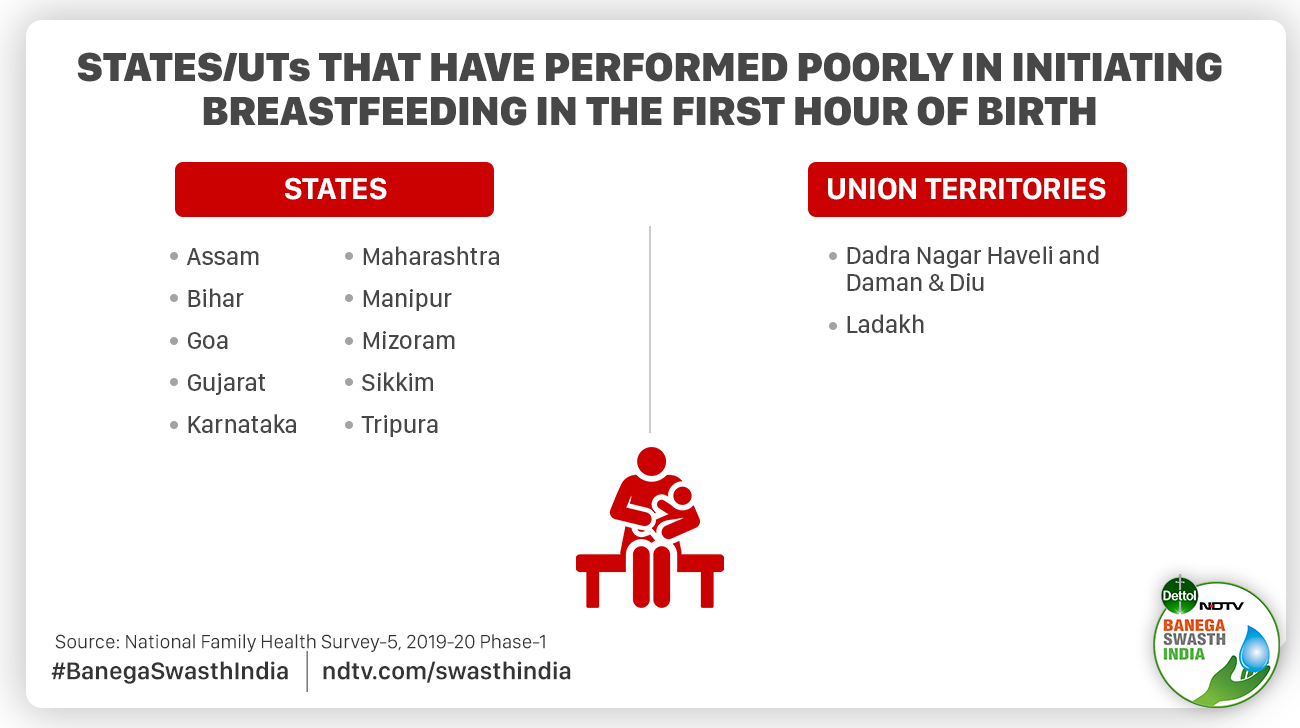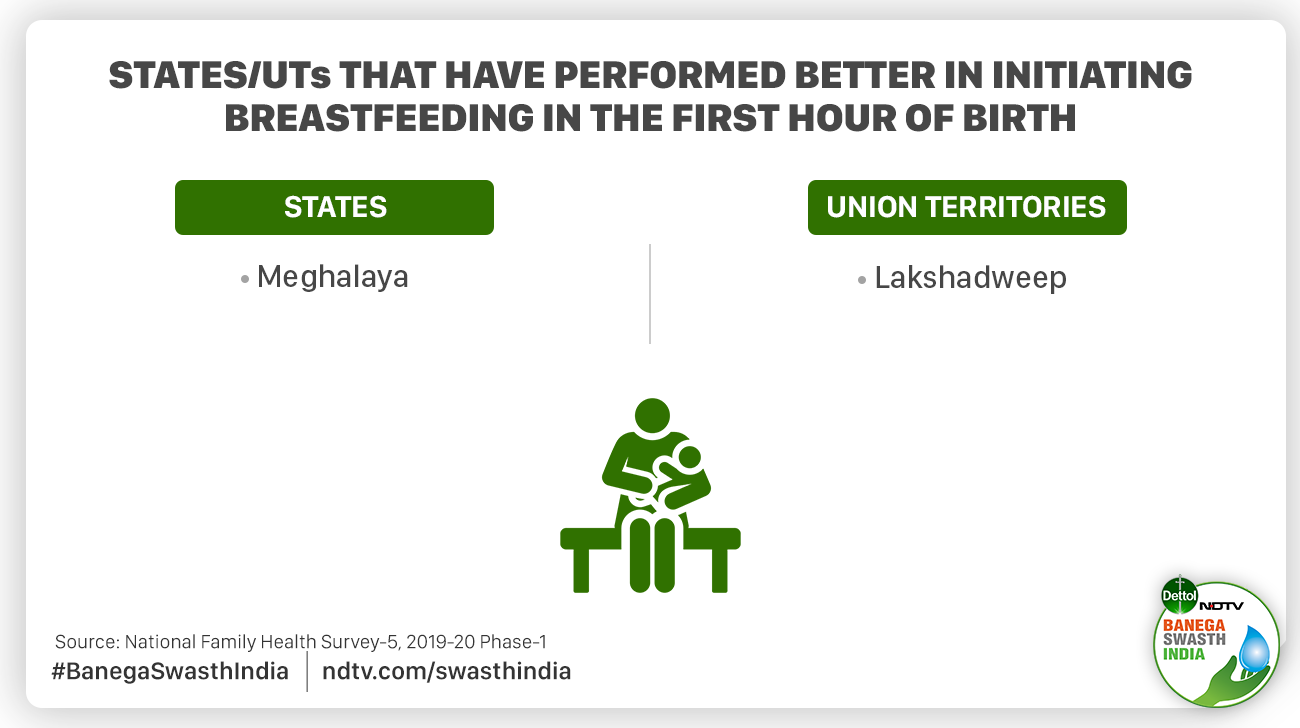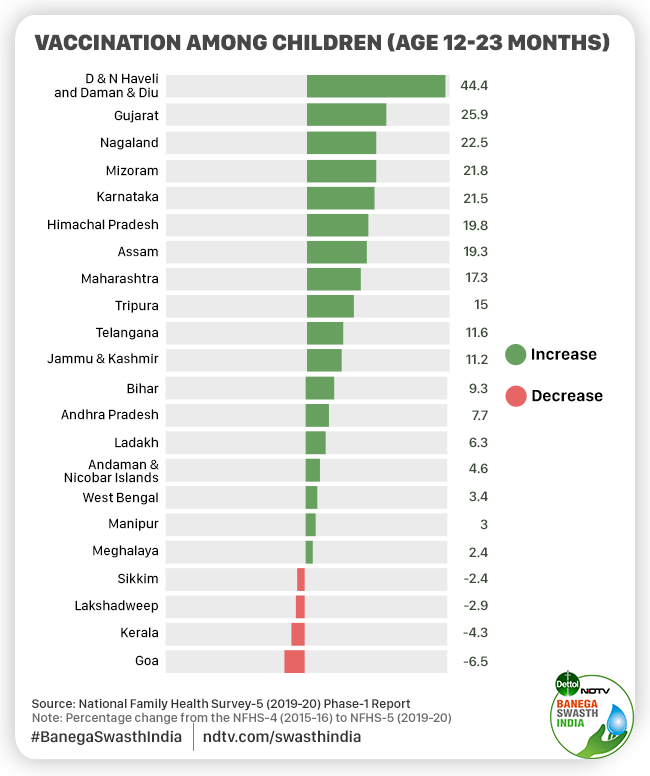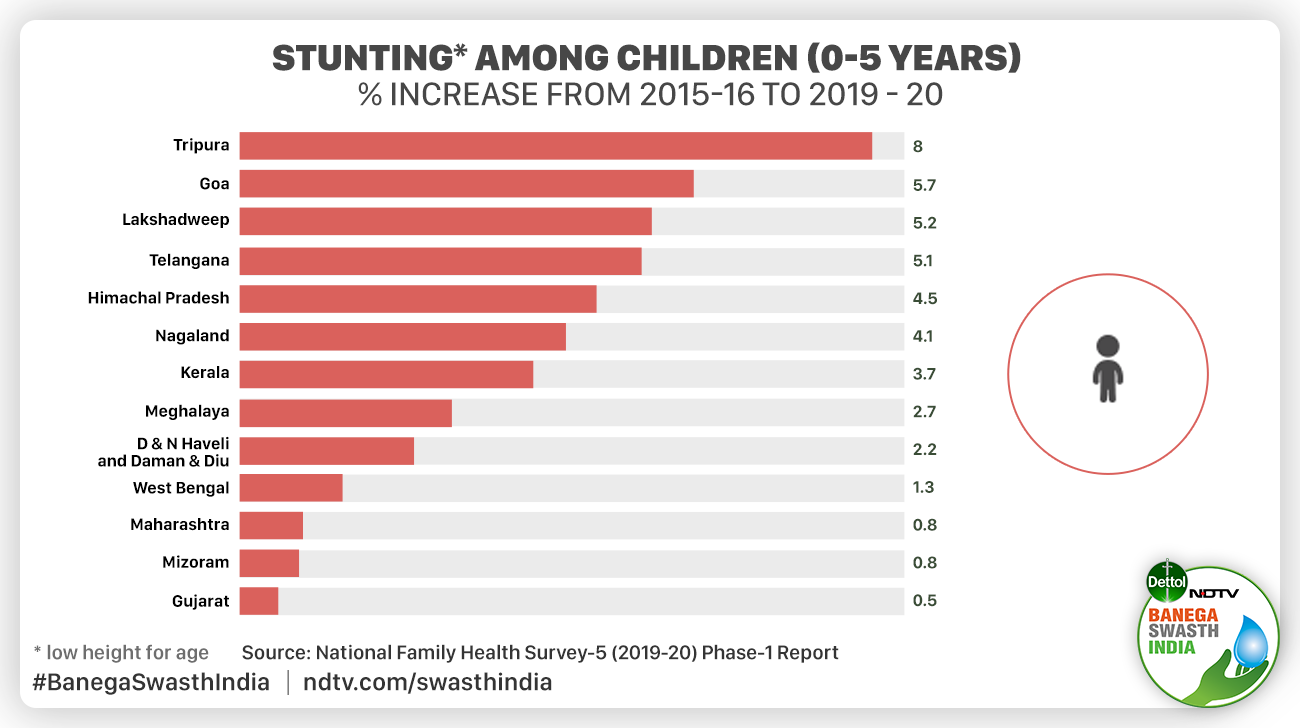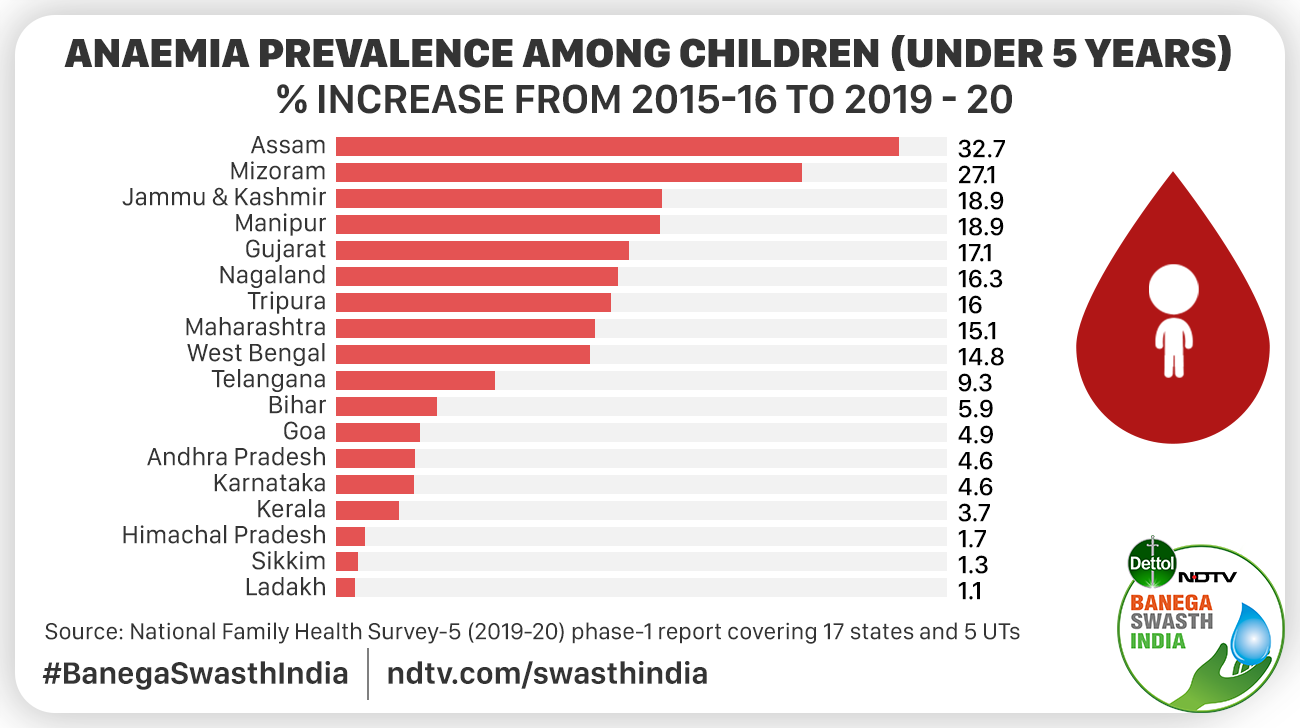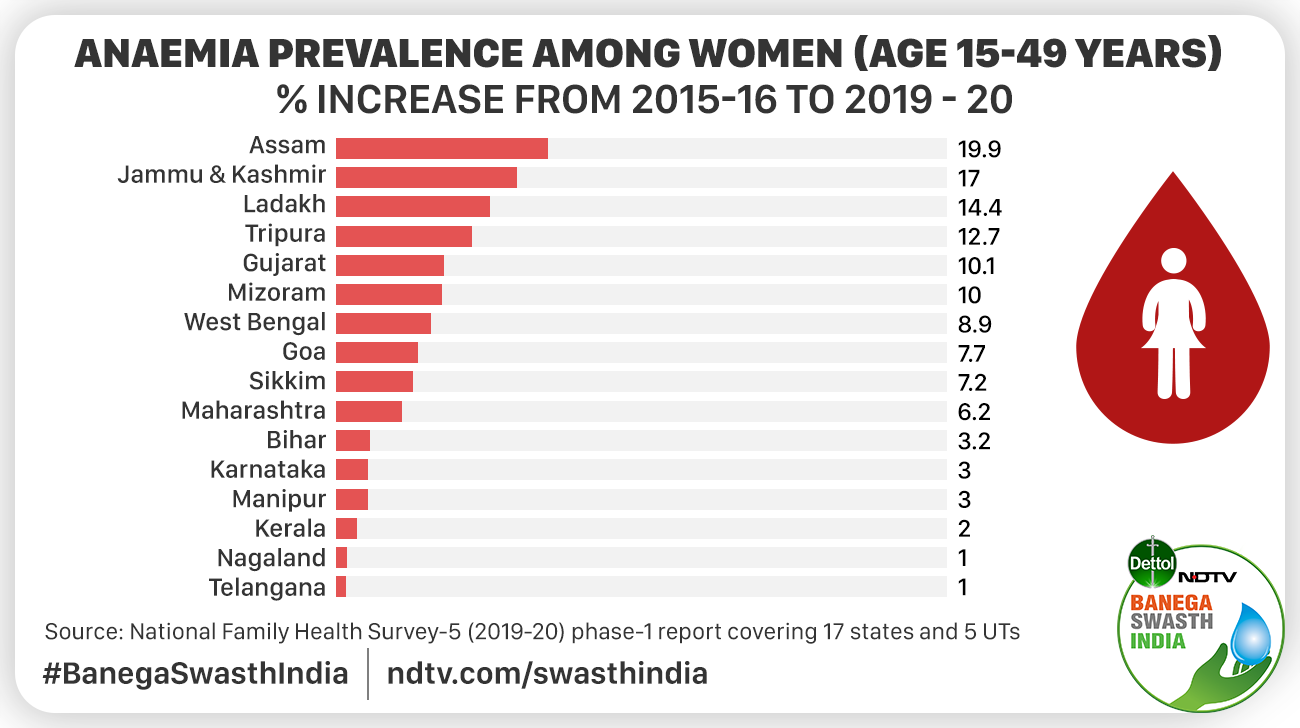Highlights
- Mortality among infants and children has decreased: NHFS-5
- NFHS-5 shows an improvement is vaccination coverage among children
- NHFS-5 reports improvement in exclusively breastfeeding in first 6 months
New Delhi: The Ministry of Health and Family Welfare (MoHFW) released partial data from the fifth round of the National Family Health Survey (NFHS-5) on December 12. The results with data of 17 states and five Union Territories (UTs) is Phase-I of the survey. According to the Union Health Ministry, the Phase II survey covering the remaining 12 States and two UTs is currently under progress. The present NFHS covers 6.1 lakh sample households across the country to collect information on population, health, family planning and nutrition-related indicators. Based on the findings of the survey, the MoHFW claims that there has been a substantial improvement in maternal and child health indicators over NFHS-4 recorded in 2015-16. However, key indicators like malnutrition, anaemia continue to be worrying across the country.
Also Read: Policy Makers Need To Focus On The First 1,000 Days Of Life: Experts React To NFHS-5 Survey Trends
Here are some of the major takeaways from the survey results released so far:
Infant And Child Mortality Rates
According to the NFHS-5, the mortality rate among infants (IMR) and children under five years of age (U5MR) have gone down over the last five years across 14 out of 17 states and four out of five UTs surveyed in phase 1 of NFHS-5. The IMR is the number of less than one-year-old babies dying per 1,000 live births while U5MR refers to the number of children dying before reaching the age of five years per 1,000 births.
IMR and U5MR have increased in three states and two UTs out of the 17 states and five UTs surveyed.
Breastfeeding
The NHFS-5 data shows that breastfeeding in the first hours of the birth of the children surveyed has decreased in 10 out of 17 states and two out of five UTs.
Meghalaya and Lakshadweep are the only places where breastfeeding during the first hour of births has increased.
NHFS-5 has reported improvement in the share of children less than six months who have been exclusively breastfed, in comparison with NFHS-4. The data shows that out of the states and UTs covered in Phase 1, 14 out of 17 states and two out of five UTs have increased exclusive breastfeeding.
According to Dr. Shailesh Jagtap, Senior Technical and Program Advisor – Alive and Thrive initiative that began in 2009 to combat global child undernutrition through interventions to support appropriate infant and young child feeding practices,
Recently release NFHS 5 data shows that in more than half of the states this indicator has declined in both progressive and non-progressive states. If we deep dive into the data it tells us that at one side institutional delivery rates have significantly improved reaching the mark near to around 90 percent and on other side early initiation of breastfeeding has declined. This hints towards health facility system being overwhelmed with increased load on the already heavy burdened facilities. There is a need to assess if these facilities are equipped with adequate staff and have the capacity to support mothers to initiate breastfeeding. Further analysis of the data shows that there is increase in the C-section deliveries in both public and private health facilities where in still the breastfeeding initiation guidelines of four hours after delivery may be being followed. Thirdly still there is a practice of prelacteals feeds and prescribing and doing bottle and formula feeding based on the myth that it will take some time for the mother’s milk to start. This is clearly a non-adherence to Infant Milk Substitute (IMS) act on not promoting anything other than mother’s milk.
Also Read: Early Initiation Of Breastfeeding Declines In 12 States And Union Territories, Reveals NFHS-5 Report
Child Vaccination
According to the survey, there has been a considerable improvement in full vaccination coverage among children age 12-23 months, among those surveyed, across 14 out of 17 states and four out of five UTs. According to the Ministry of Health and Family Welfare, full immunisation implies vaccinating children with BCG (Bacille Calmette-Guerin) which is a vaccine for tuberculosis (TB), vaccines to prevent measles MMR (measles, mumps, and rubella) vaccine and three doses each of polio (excluding polio vaccine given at birth) and DPT (diphtheria, pertussis, and tetanus).
The data shows that in Dadar & Nagar Haveli and Daman & Diu, the percentage of fully vaccinated children (12-23 months) jumped to 94.9 per cent in NFHS-5 from 50.5 per cent, achieving an increase of a significant 44.4 per cent. Gujarat is another state that has improved its full immunisation coverage significantly among children from 50.4 per cent in 2015-16 to 76.3 per cent in 2019-2020.
However, the full vaccination coverage among children has decreased over the five years the states of Kerala (by 4.3 per cent), Goa (by 6.5 per cent) and Sikkim (by 2.4 per cent) and in the UT of Lakshadweep (by 2.6 per cent).
According to an official from the National Health Mission, Government of Kerala, the state was among the top-performing states in terms of child vaccination in the previous NFHS findings (2015-16) but the two major floods in consequent years are major factors which affected all outreach immunisation activities. He claimed that the state has improved its primary healthcare services which has reflected in the reduced mortality rates among children.
Nutritional Status Of Children
Status of nutrition among children has remained a concern across all the 17 states and 5 UTs surveyed in the first phase of NFHS-5. According to the report, Stunting (which means low-height-for-age) increased in among children under five years of age who were surveyed, in 11 out of 17 states and three out of five UTs. The states where stunting has decreased are Andhra Pradesh, Assam, Bihar, Karnataka, Manipur, Sikkim, Andaman & Nicobar Islands, Jammu & Kashmir, and Ladakh.
Nine states and three UTs out of the 17 states and five UTs surveyed recorded a rise in the percentage of children under five years who are wasted (which means low weight-for-height) in comparison to NFHS-4.
As many as 14 of the states surveyed registered a rise in the percentage of under-five children who are underweight in comparison to NFHS-4.
States and UTs where the percentage of underweight children who are under five years of age has decreased are Andhra Pradesh, Bihar, Karnataka, Manipur, Meghalaya, and Sikkim.
The NFHS-5 further showed that almost all states and UTs have recorded a drastic rise in the percentage of children under five years who are overweight. The trend has most likely been seen due to unhealthy food habits, reduced physical activity, as per the Union Health Ministry. About 13.4 per cent children under the age of five who were covered in the survey were found to be obese in Ladakh which was highest among the 22 states and union territories surveyed, followed by Lakshadweep at 10.5 per cent, Mizoram 10 per cent, Jammu and Kashmir, and Sikkim 9.6 per cent each.
In the past five years, obesity has decreased in Goa by 0.9 per cent and in Dadar & Nagar Haveli and Daman & Diu by 2 per cent.
Andhra Pradesh is among those few sates that have shown some improvement in nutrition indices. According to Dr Arun Gupta, Senior Pediatrician and the central coordinator of the Breastfeeding Promotion Network of India (BPNI), while it is encouraging that malnutrition seems to have reduced a little in Andhra Pradesh has managed to bring down the prevalence of child underweight, wasting and stunting through its flagship programmes focusing on women and children. He recommends other states to investigate the gaps and implement measures to achieve malnutrition goals.
While talking about the increase in malnutrition among children in Kerala Dr Dhanya Sooraj, Nutrition Consultant, Department of Women and Child Development, Government of Kerala said,
The NFHS-5 data has shown that malnutrition has increased among children over the years. We had some idea about this situation already much before the findings were released and because of this, the state had already started running various kinds of programmes focusing on nutrition of which the latest being the ‘lactation cookies’ scheme under which all lactating mothers are being given cookies made from superfoods everyday free-of-cost. We have also started a baseline study to understand the where the problems have occurred and identify the gaps. We will further strategies according to the findings of this baseline study.
She further said that floods and virus attacks like Nipah epidemic in the past few years have also caused a lot of damage to the food supply system in the rural areas of the state. Many Anganwadi Centres were washed away during the flood and many others had to face disruptions during Nipah attacks, she said. Dr Sooraj added that these calamities have pushed many people further into poverty and for the access to nutritious food has become challenging. She asserted that Kerala has been focusing on nutrition and healthcare on priority and will be able to deliver improved health and nutrition outcomes sooner than later.
Commenting on the findings of the survey, Basanta Kumar Kar, International Development Professional in Nutrition said,
The findings are alarming. The worsening of nutritional status among children and women shows that enough efforts were not made for prevention and management of malnutrition in almost all states and UTs in the country. There is an urgent need to rethink the strategies and invest in the tackling nutrition in an effective way. It seems that the rates of stunting have risen in relatively richer sates such as Kerala, Gujarat, Maharashtra, Goa and Himachal Pradesh. The irony is that all these states were able to lower their rates of stunting in the previous decade.
Anaemia Among Children And Women
The NHFS-5 data shows that the prevalence of anaemia among children under five years of age has increased in 16 out of 17 states and two out of five UTs surveyed in NFHS-5 Phase-1. Anaemia is a condition in which the blood does not have enough healthy red blood cells which lead to reduced oxygen flow to the body’s organs.
The highest increase in anaemia, among children surveyed, over the last five years was recorded in Assam, followed by Mizoram, Manipur, Jammu and Kashmir and Gujarat the survey data has revealed.
Only one state and three UTs saw a reduction in anaemia among children which are Meghalaya and the UTs of Andaman & Nicobar Islands, D & N Haveli and Daman & Diu, and Lakshadweep.
A similar trend was seen in the prevalence of anaemia among women in the age of 15-49 years. Out of the 22 states/UTs covered in phase 1 of NFHS-5, 16 show an increase in anaemia among women.
A decrease in anaemia among women was recorded in Himachal Pradesh, Andhra Pradesh and Meghalaya, Andaman & Nicobar Islands, D & N Haveli and Daman & Diu, and Lakshadweep.
NFHS-5 has shown that anaemia is worsening across most states and in the majority of our population. This is a serious issue which requires attention and discussion. Anaemia has several consequences like poor cognition, decreased productivity, sub-optimal health among others. Also, there is a need to understand that anaemia is not an iron deficiency issue alone. Several nutrients are important hers while the authorities are only focussing on iron-fortified foods. In order to tackle anaemia, malnutrition needs to be addressed robustly, said Dr Shweta Khandelwal is Head, Nutrition Research and Additional Professor, Public Health Foundation of India.
NDTV – Dettol Banega Swasth India campaign is an extension of the five-year-old Banega Swachh India initiative helmed by Campaign Ambassador Amitabh Bachchan. It aims to spread awareness about critical health issues facing the country. In wake of the current COVID-19 pandemic, the need for WASH (Water, Sanitation and Hygiene) is reaffirmed as handwashing is one of the ways to prevent Coronavirus infection and other diseases. The campaign highlights the importance of nutrition and healthcare for women and children to prevent maternal and child mortality, fight malnutrition, stunting, wasting, anaemia and disease prevention through vaccines. Importance of programmes like Public Distribution System (PDS), Mid-day Meal Scheme, POSHAN Abhiyan and the role of Aganwadis and ASHA workers are also covered. Only a Swachh or clean India where toilets are used and open defecation free (ODF) status achieved as part of the Swachh Bharat Abhiyan launched by Prime Minister Narendra Modi in 2014, can eradicate diseases like diahorrea and become a Swasth or healthy India. The campaign will continue to cover issues like air pollution, waste management, plastic ban, manual scavenging and sanitation workers and menstrual hygiene.
[corona_data_new]




